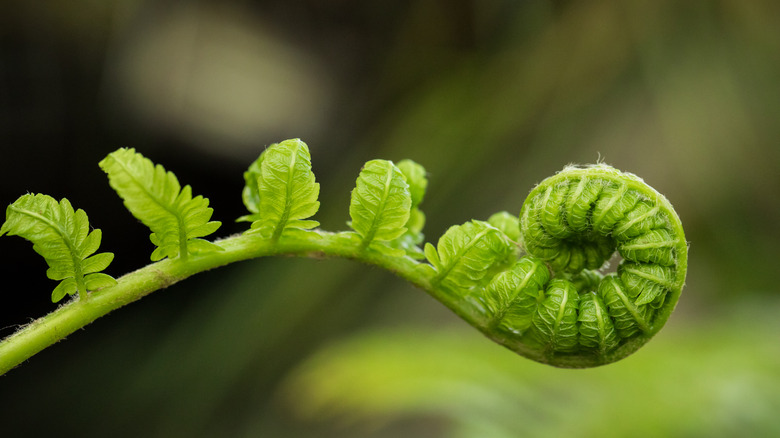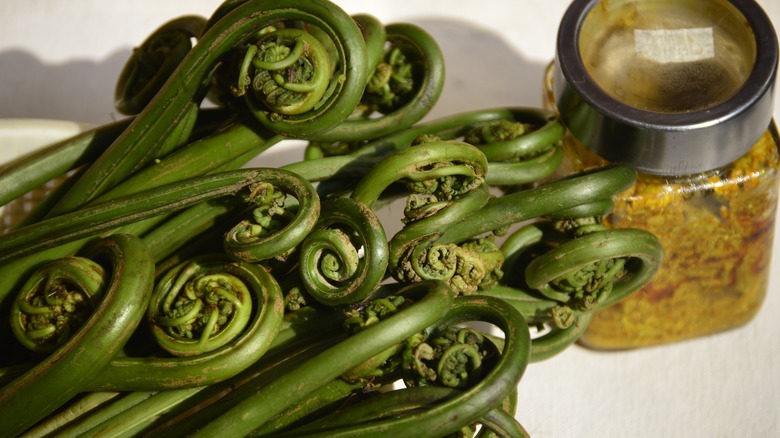Why You Should Never Eat Fiddlehead Ferns Raw
Fiddlehead ferns, sometimes called ostrich ferns, are a popular ingredient among the forager communities who sometimes sell them to farmers markets and specialty groceries. These ferns, which Farmers' Almanac claims are named for their fiddle-like coil, are eaten across the northern parts of North America during their short period of availability in April and May. They are a welcome sign that spring has officially arrived to put winter behind us.
Farmers' Almanac describes the flavor of fiddlehead ferns as similar to asparagus. D'Artagnan places the flavor closer to green beans. If you're lucky enough to have purchased some fiddlehead ferns from a local forager or market, preparing them for supper is really easy. They can be cooked in the same manner as either of those vegetables. New England Today recommends a basic boil and sauté recipe. Simply boil them in salted water and sauté them in browned butter with some ramps, garlic, or scallions.
Fiddlehead ferns must be cooked
It's a good thing that cooking fiddlehead ferns is so easy because you must never eat them raw. As Canada's public health website states, food borne illnesses connected to the consumption of raw fiddlehead ferns have been reported.
Details in a case report shared by the CDC show symptoms of food poisoning that include nausea, vomiting, and diarrhea. CDC staff were puzzled because none of the fiddleheads in North America had been known to be poisonous. In fact, it was only when restaurants began offering the ferns as part of their menu that outbreaks really began to occur. Still, the report concluded it was better to be safe than sorry, stating, "Although a toxin has not been identified in the fiddleheads of the ostrich fern, the findings in this report suggest it may be prudent to cook fiddleheads thoroughly (e.g., boiling for 10 minutes) before eating."
The Canadian government recommends removing as much of the husk from the fern as possible, washing the ferns with cold water, and then proceeding with the aforementioned cooking methods. To preserve the ferns, freeze them after cleaning and boiling them for two minutes. Plunge the ferns into cold water, drain the cold water, and then pack the food in freezer bags.

